DIALOGIC D160SCLSREV3CN
Specifications
Form Factor
ISA
Network Interface
On-board loop start interface
Ports
16
Resource Bus
SCbus or PEB
Features
- Board Locator Technology eliminates confusing DIP switch or jumper settings and simplifies installation
- C language application program interfaces (APIs) for MS-DOS*, UNIX*, and Windows NT* shorten your development cycle so you can get your applications to market faster
- Caller ID capability for "screen pop" applications (supports Bellcore CLASS* Protocols)
- Configure multiple boards in a single PC (ISA bus) for easy and cost-effective system expansion on the best computing platform that best fits your needs
- Create more cost-effective switching solutions via access to the SCbus with its 1,024 time slot capability; SCxbus interbox communications provides the capability to build higher density systems and l
- Downloadable signal and call processing firmware provides easy feature enhancement and field-proven performance based on over four million installed ports
- DTMF (touch tone) provides reliable detection during voice playback - allows callers to "type-ahead" through menus
- High-density analog interface voice processing platform enables system integrators and developers to lower costs by incorporating more ports per chassis, by using less expensive desktop-style machines
- Intel® 486 GX microprocessor offloads call processing tasks from host PC, giving more power to the application
- Optional Global Dial Pulse Detection (GDPD) feature enables callers without touch tone phones to access applications. No additional "pulse to tone converter" hardware is needed.
- Sixteen independent loop start telephone interfaces, combined with 16 channels of voice processing in one ISA slot, provide effective solutions for building high-density applications
- Supported by CT Media™ server software, a standards-based development platform for building scalable applications that can run with other vendors' products on converged communications servers
- Two independent Motorola 56002* digital signal processors (DSPs), clocked at 65 MHz; each with private, high-speed SRAM, permit execution of Spring Ware signal processing algorithms
Datasheet
Extracted Text
Datasheet ® ® Intel Dialogic ProLine/2V Retired product – This datasheet is for informational purposes only; this product is no longer available. Consider migrating to: ® ® ■ Intel Dialogic DIALOG/4 (http://www.intel.com/network/csp/products/2419web.htm) ® ® ■ Intel Dialogic D/4PCI voice board (http://www.intel.com/network/csp/products/5795web.htm) ® ® ■ Intel Dialogic D/41JCT-LS (http://www.intel.com/network/csp/products/6925web.htm) ■ D/160SC-LS voice board (http://www.intel.com/network/csp/products/1765web.htm) ® ® The Intel Dialogic ProLine/2V is a feature-rich, two-port voice board in a 2/3 length ISA form factor that is ideal for the small/medium business (SMB) market segment. The ProLine/2V has audio connectors and an electret microphone that allow for convenient online and offline recording and playback of system voice prompts. Features and Benefits Two independent voice processing ports in a single, 2/3-size ISA slot supporting low- to medium-density voice systems Configure multiple ProLine/2V boards in a single PC for easy and cost-effective system expansion, Intel in and to build scalable systems from two to 32 ports Communications Audio connectors allow convenient offline recording and playback of system voice prompts Electret microphone input jack allows convenient online recording of system voice prompts Caller ID capability for “screen pop” applications (supports Bellcore* CLASS protocols) Windows* 95 and Windows NT* Telephony API (TAPI*) support and .WAV audio capability Optional Global DPD pulse-to-tone conversion software lets developers use the ProLine/2V in countries with limited touchtone telephone service Voice coding at dynamically selectable data rates (24 Kb/s to 88 Kb/s, selectable on a channel-by- channel basis) provide optimal tradeoff between disk storage requirements and voice quality Enhanced telephone circuitry and automatic gain control (AGC) maintains recording quality over a wide dynamic range Downloadable Spring Ware signal and call processing firmware provides easy feature enhancement and field-proven performance based on over four million installed ports Perfect digit DTMF (touchtone) provides reliable detection during voice playback — lets callers “type-ahead” through menus Outbound call progress analysis analyzes outgoing call status quickly and accurately C language application program interfaces (APIs) for MS-DOS*, Windows* 95, and Windows NT* Third-party application generators available for rapid application development ® ® Datasheet Intel Dialogic ProLine/2V 2 ProLine/2V 2 ProLine/2V 2 ProLine/2V 2 ProLine/2V PC Configurations Software Support ® ® The Intel Dialogic ProLine/2V board shares a ® ® The Intel Dialogic ProLine/2V board is supported by common hardware and firmware architecture with other System Software and Software Development Kits Intel voice boards for maximum flexibility and (SDKs) for MS-DOS*, Windows* 95, and Windows NT*. scalability. Developers can easily add features and/or These packages contain a set of tools for developing expand the size of the system while protecting their complex multichannel applications. original investment in hardware and application code. Applications can be ported to lower or higher line- density platforms with minimal modifications. The ProLine/2V board installs in IBM* PC XT*/AT* (ISA bus) and compatible computers (PC platforms based ® on the Intel386™, Intel486™, or Pentium processors). The ProLine/2V board provides everything developers need for building integrated voice solutions scalable from two to 64 ports. Applications ■ Voice mail/voice messaging ■ Interactive voice response ■ Audiotex ■ Inbound and outbound telemarketing ■ Operator services ■ Dictation ■ Auto dialers ■ Notification systems 2 ® ® Intel Dialogic ProLine/2V Datasheet Microphone In (for off-line use) DSP RAM Audio 1 of 2 Shown In/Out (Channel 2 only) Line Interface with DSP To CODEC Caller ID Central Capability Office or PBX Control Bus Shared Control Code/Data RAM Processor DRAM DATA IRQ PC XT/AT BUS Inbound telephony signaling (ring and loop current Functional Description detection) are conditioned by the line interface and ® ® The Intel Dialogic ProLine/2V board uses a unique routed via a control bus to the control processor. The dual-processor architecture that combines the signal control processor responds to these signals, informs processing capabilities of a digital signal processor the application of telephony signaling status, and (DSP) with the decision-making and data movement instructs the line interface to transmit outbound signal- functionality of a general-purpose 80C188 control ing (on-hook/off-hook) to the telephone network. microprocessor. This dual-processor approach offloads many low-level decision-making tasks from the host The audio voice signal from the network is sent through computer, enabling development of more powerful a bandpass filter, conditioned by the line interface, and applications. then applied to a COder/DECoder (CODEC) circuit. The CODEC filters, samples, and digitizes the inbound This architecture analog audio signal and passes the digitized signal to ■ handles real-time events a Motorola* DSP. ■ manages data flow to the host PC for faster system response time Part of the board’s telephone interface includes an on- ■ reduces host PC processing demands hook audio path that detects Caller ID information. ■ processes DTMF and telephony signaling Depending on the level of service offered by the local ■ frees the DSP to perform signal processing on the telephone provider, Caller ID can include the date, incoming call time, caller’s telephone number, and (in some Each of two loop start telephone line interfaces on the enhanced Caller ID environments) the name of the ProLine/2V board receive analog voice and telephony person calling. The on-hook audio path can also detect signaling information from the telephone network (see touchtones while the line is on-hook. This capability lets block diagram). Each telephone line interface uses reli- developers use the ProLine/2V board behind PBXs that able, solid-state hook switches (no mechanical con- require on-hook touchtone detection for their signaling. tacts) and FCC part 68 class B ring detection circuitry. This FCC-approved ring detector is less susceptible to The ProLine/2V also receives and transmits audio spurious rings created by random voltage fluctuations directly on one channel via line-level input and output on the network. Each interface also incorporates cir- jacks or directly into an electret microphone jack. This cuitry that protects against high-voltage spikes and interface bypasses the telephony interface and lets you adverse network conditions, letting applications go off- record prompts. Line-level input can be used to load hook any time during ring cadence without damaging prerecorded prompts or messages via line-level audio the board devices, such as a cassette tape recorder or compact 3 ® ® Datasheet Intel Dialogic ProLine/2V disc player. The line-level output can also be used to a channel-by-channel basis and can be changed each monitor calls or play out files in a development time a record or play function is initiated. The DSP environment. processed speech is transmitted by the control microprocessor to the host PC for disk storage. Based on Spring Ware firmware loaded in DSP RAM, the DSP performs the following signal analysis and Outbound processing is the reverse of inbound operations on the incoming data: processing. When replaying a stored file, the ■ automatic gain control (AGC) to compensate for vari- microprocessor receives the voice information from the ations in the level of the incoming audio signal host PC and passes it to the DSP which decodes the ■ applies an Adaptive Differential Pulse Code compressed file. The DSP sends digitized voice to the Modulation (ADPCM) or Pulse Code Modulation CODEC to be converted into analog voice and then to (PCM) algorithm to compress the digitized voice and the line interface for transmission to the telephone save disk storage space network. ■ detects the presence of tones — DTMF, MF, or an application-defined single- or dual-frequency tone The on-board microprocessor controls all operations of ■ silence detection to determine whether the line is the ProLine/2V board via a local bus and interprets and quiet and the caller is not responding executes commands from the host PC. This For outbound data, the DSP performs the following microprocessor ■ operations: handles real-time events ■ ■ expands stored, compressed audio data for manages data flow to the host PC to provide faster playback system response time ■ ■ adjusts the volume and rate of speed of playback reduces PC host-processing demands ■ upon application or user request processes DTMF and telephony signals before ■ generates tones — DTMF, MF, or any application- passing them to the application ■ defined general-purpose tone frees the DSP to perform signal processing Communications between this microprocessor and the The dual-processor combination also performs the host PC is via the shared RAM that acts as an following outbound dialing and call progress input/output buffer, increasing the efficiency of disk file monitoring: transfers. This RAM interfaces to the host PC via the ■ transmits an off-hook signal to the telephone network IBM* XT*/AT* bus. ■ dials out (makes an outbound call) ■ monitors and reports results All operations are interrupt-driven to meet the demands — line busy or congested of real-time systems. ProLine/2V boards installed in the — operator intercept PC share the same interrupt line. When the system is — ring, no answer initialized, Spring Ware firmware, which controls all — or if the call is answered, whether answered by a board operations, is downloaded from the host PC to person, an answering machine, a facsimile machine, or a modem the on-board code/data RAM and DSP RAM. This When recording speech, the DSP can use different downloadable firmware gives the board all of its digitizing rates from 24 Kb/s to 88 Kb/s as selected by intelligence and enables easy feature enhancement the application for the best speech quality and most and upgrades. efficient storage. The digitizing rate can be selected on 4 ® ® Intel Dialogic ProLine/2V Datasheet Technical Specifications** Number of ports Two Max. boards/system 16 Analog network interface Onboard loop start interface circuits ® Microprocessor Intel 80C188 Digital signal processor Motorola* DSP56001 Host Interface Bus compatibility IBM* PC XT*/AT* (ISA) Bus speed 4 MHz to 12 MHz, 70 nsec back-to-back bus cycle Shared memory 8 KB page, switch selectable on 8 KB boundaries Base addresses D000h (default) A000h C000h Interrupt level IRQ 2, 3, 4, 5, 7, 9, 10, 11, 12 jumper selectable One IRQ is shared by all ProLine/2V boards ‡ Telephone Interface Trunk type Loop start Impedance 600 Ohms nominal Ring detection 25 Vrms minimum 15.3 Hz to 68 Hz, 150 Vrms maximum Loop current range 20 mA to 120 mA, DC (polarity insensitive) Crosstalk coupling –70 dB at 3 kHz channel to channel Frequency response 300 Hz to 3400 Hz ±3 dB (transmit and receive) Connector Two RJ-11 type Audio Interface Line input impedance 10 KOhms Line input signal range –32 dBv to –2 dBv, AC coupled mono or stereo Line input connector 0.137 in. (3.5 mm) stereo audio jack Line output impedance 600 Ohms Line output signal range –32 dBv to –2 dBv, mono Line output connector 0.137 in. (3.5 mm) stereo audio jack Microphone Interface Microphone input impedance 10 KOhms Microphone input signal range –55 dBv to –25 dBv, AC coupled mono or stereo, +5 Vdc phantom power for electret microphones only Microphone input connector 0.137 in. (3.5 mm) stereo audio jack Power Requirements +5 VDC 500 mA +12 VDC 35 mA –12 VDC 35 mA Operating temperature 0°C to +50°C Storage temperature –20°C to +70°C Humidity 8% to 80% noncondensing Form factor PC XT (ISA) 7.9 in. long (19.75 cm) 0.75 in. wide (1.875 cm) 3.85 in. high (9.625 cm) (excluding edge connector) 5 ® ® Datasheet Intel Dialogic ProLine/2V Technical Specifications** (cont.) Safety and EMI Certifications United States FCC part 68 ID#: EBZUSA-65588-VM-E REN: 1.0B UL: E143032 Canada IC CS-03, 885-4452A Load number: 5 ULC: E143032 Estimated MTBF 345,000 hours per Bellcore Method I ® Warranty Intel Telecom Products Warranty Information at http://www.intel.com/network/csp/products/3144web.htm Spring Ware Firmware Technical Specifications** Audio Signal † Receive range –50 dBm to –3 dBm (nominal), for average speech signals configurable by ‡ parameter Automatic gain control Application can enable/disable. Above –30 dBm results in full-scale ‡ recording, configurable by parameter. ‡ Silence detection –40 dBm nominal, software adjustable ‡ Transmit level (weighted average) –9 dBm nominal, configurable by parameter Transmit volume control 40 dB adjustment range, with application-definable increments Frequency Response 24 Kb/s 300 Hz to 2600 Hz ±3 dB 32 Kb/s 300 Hz to 3400 Hz ±3 dB 48 Kb/s 300 Hz to 2600 Hz ±3 dB 64 Kb/s 300 Hz to 3400 Hz ±3 dB Audio Digitizing 24 Kb/s ADPCM @ 6 kHz sampling 32 Kb/s ADPCM @ 8 kHz sampling 48 Kb/s µ-law PCM @ 6 kHz sampling 64 Kb/s µ-law PCM @ 8 kHz sampling Digitization selection Selectable by application on function call-by-call basis Playback speed control Pitch controlled; Available for 24 and 32 Kb/s data rates; Adjustment range: ±50%. Adjustable through application or programmable DTMF control. Wave Audio Supports 11 kHz linear PCM, 8-bit mono mode (available only when running Windows* 95 and Windows NT*) DTMF Tone Detection DTMF digits 0 to 9, *, #, A, B, C, D per Bellcore* LSSGR Sec 6 Dynamic range Programmable, default set at –36 dBm to +0 dBm per tone Minimum tone duration 40 ms, can be increased with software configuration Interdigit timing Detects like digits with a 40 ms interdigit delay. Detects different digits with a 0 ms interdigit delay. Twist and frequency variation Meets Bellcore LSSGR Sec 6 and EIA 464 requirements Acceptable twist 10 dB Signal/noise ratio 10 dB (referenced to lowest amplitude tone) Noise tolerance Meets Bellcore LSSGR Sec 6 and EIA 464 requirements for Gaussian, impulse, and power line noise tolerance Cut-through Detects down to –36 dBm per tone into 600 Ohm load impedance Talk off Detects less than 20 digits while monitoring Bellcore TR-TSY-000763 standard speech tapes. (LSSGR requirements specify detecting no more than 470 total digits.) Detects 0 digits while monitoring MITEL speech tape #CM 7291. 6 ® ® Intel Dialogic ProLine/2V Datasheet Spring Ware Firmware Technical Specifications** (cont.) Global Tone Detection Tone type Programmable for single or dual Max. number of tones Application-dependent Frequency range Programmable within 300 Hz to 3500 Hz Max. frequency deviation Programmable in 5 Hz increments Frequency resolution Less than 5 Hz. NOTE: Certain limitations exist for dual tones closer than 60 Hz apart. Timing Programmable cadence qualifier, in 10 ms increments Dynamic range Programmable, default set at –36 dBm to +0 dBm per tone Global Tone Generation Tone type Generate single or dual tones Frequency range Programmable within 200 Hz to 4000 Hz Frequency resolution 1 Hz Duration 10 ms increments Amplitude –43 dBm0 to –3 dBm0 per tone nominal, programmable MF Signaling MF digits 0 to 9, KP, ST, ST1, ST2, ST3 per Bellcore LSSGR Sec 6, TR-NWT-000506 and CCITT Q.321 Transmit level Complies with Bellcore LSSGR Sec 6, TR-NWT-000506 Signaling mechanism Complies with Bellcore LSSGR Sec 6, TR-NWT-000506 Dynamic range for detection –25 dBm0 to –1 dBm0 per tone Acceptable twist 6 dB Acceptable freq. variation Less than ±1 Hz Call Progress Analysis Busy tone detection Default setting designed to detect 74 out of 76 unique busy/congestion tones used in 97 countries as specified by CCITT Rec. E., Suppl. #2. Default uses both frequency and cadence detection. Application can select frequency only for faster detection in specific environments. Ring back detection Default setting designed to detect 83 out of 87 unique ring back tones used in 96 countries as specified by CCITT Rec. E., Suppl. #2. Uses both frequency and cadence detection. Positive voice detection accuracy >98% based on tests on a database of real world calls in North America. Performance in other markets may vary. Positive voice detection speed Detects voice in as little as 1/10th of a second Positive answering machine detection 80% to 90% based on application and environment accuracy Fax/modem detection Preprogrammed Intercept detection Detects entire sequence of the North American tri-tone. Other SIT tones can be programmed. Dial tone detection before dialing Application enable/disable Supports up to three different user-definable dial tones Programmable dial tone drop out debouncing Tone Dialing DTMF digits 0 to 9, *, #, A, B, C, D per Bellcore LSSGR Sec 6, TR-NWT-000506 MF digits 0 to 9, KP, ST, ST1, ST2, ST3 Frequency variation ±0.5% of nominal frequency ‡ Rate 10 digits/s, configurable by parameter ‡ Level –5 dBm0 per tone, nominal, configurable by parameter 7 ® ® Datasheet Intel Dialogic ProLine/2V Spring Ware Firmware Technical Specifications (cont.) Pulse Dialing 10 digits 0 to 9 ‡ Pulsing rate 10 pulses/s, nominal, configurable by parameter ‡ Break ratio 60% nominal, configurable by parameter Analog Caller Identification Applicable standards Bellcore TR-TSY-000030 Bellcore TR-TSY-000031 TAS T5 PSTN1 ACLIP: 1994 (Singapore) Modem standard Bell 202 or V.23, serial 1200 b/s (simplex FSK signaling) Receive sensitivity –48 dBm (–50 dBv) to –1 dBm Noise tolerance Minimum 18 dB SNR over 0 to –48 dBm dynamic range for error-free performance Data formats Single Data Message (SDM) and Multiple Data Message (MDM) formats via API calls and commands Line impedance AC coupled 600 Ohm (at 1.8 kHz) termination during Caller ID on-hook detection interval Message formats ASCII or binary SDM, MDM message content Analog Display Services Interface (ADSI) FSK generation per Bellcore TR-NWT-000030. CAS tone generation and DTMF detection per Bellcore TR-NWT-001273. ** All specifications are subject to change without notice. † Average speech mandates +16 dB peaks above average and preserves –13 dB valleys below average. ‡ Analog levels: 0 dBm0 corresponds to a level of +3 dBm at tip-ring analog point. Values vary depending on country requirements; contact your Intel Sales Engineer. Hardware System Requirements ® ■ Intel386™, Intel486™, or Pentium processor IBM PC AT (ISA) bus or compatible computer ■ Operating system hardware requirements vary according to the number of channels being used 8 To learn more, visit our site on the World Wide Web at http://www.intel.com. 1515 Route Ten Parsippany, NJ 07054 Phone: 1-973-993-3000 ® INFORMATION IN THIS DOCUMENT IS PROVIDED IN CONNECTION WITH INTEL PRODUCTS. NO LICENSE, EXPRESS OR IMPLIED, BY ESTOPPEL OR OTHERWISE, TO ANY INTELLECTUAL PROPERTY RIGHTS IS GRANTED BY THIS DOCUMENT. EXCEPT AS PROVIDED IN INTEL’S TERMS AND CONDITIONS OF SALE FOR SUCH PRODUCTS, INTEL ASSUMES NO LIABILITY WHATSOEVER, AND INTEL DISCLAIMS ANY EXPRESS OR IMPLIED WARRANTY, RELATING TO SALE AND/OR USE OF INTEL PRODUCTS INCLUDING LIABILITY OR WARRANTIES RELATING TO FITNESS FOR A PARTICULAR PURPOSE, MERCHANTABILITY, OR INFRINGEMENT OF ANY PATENT, COPYRIGHT OR OTHER INTELLECTUAL PROPERTY RIGHT. Intel products are not intended for use in medical, life saving, life sustaining, critical control or safety systems, or in nuclear facility applications. Intel may make changes to specifications, product descriptions, and plans at any time, without notice. Intel, Intel Dialogic, Intel386, Intel 486, Pentium, and the Intel logo are trademarks or registered trademarks of Intel Corporation or its subsidiaries in the United States and other countries. *Other names and brands may be claimed as the property of others. ** All specifications are subject to change without notice. Printed in the USA Copyright © 2004 Intel Corporation All rights reserved. Printed on recycled paper. 02/04 00-2700-009 e
Frequently asked questions
What makes Elite.Parts unique?

What kind of warranty will the D160SCLSREV3CN have?

Which carriers does Elite.Parts work with?

Will Elite.Parts sell to me even though I live outside the USA?

I have a preferred payment method. Will Elite.Parts accept it?

Why buy from GID?

Quality
We are industry veterans who take pride in our work

Protection
Avoid the dangers of risky trading in the gray market

Access
Our network of suppliers is ready and at your disposal

Savings
Maintain legacy systems to prevent costly downtime

Speed
Time is of the essence, and we are respectful of yours



 Manufacturers
Manufacturers
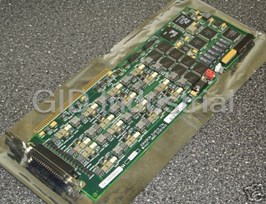

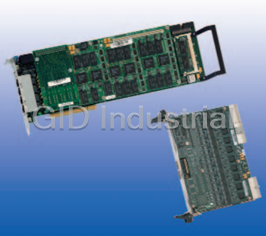
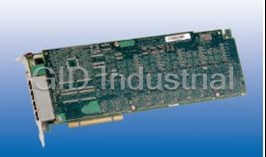
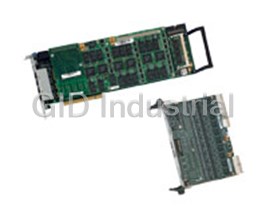
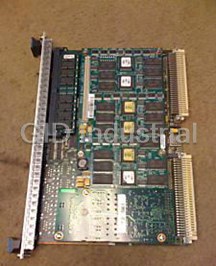




What they say about us
FANTASTIC RESOURCE
One of our top priorities is maintaining our business with precision, and we are constantly looking for affiliates that can help us achieve our goal. With the aid of GID Industrial, our obsolete product management has never been more efficient. They have been a great resource to our company, and have quickly become a go-to supplier on our list!
Bucher Emhart Glass
EXCELLENT SERVICE
With our strict fundamentals and high expectations, we were surprised when we came across GID Industrial and their competitive pricing. When we approached them with our issue, they were incredibly confident in being able to provide us with a seamless solution at the best price for us. GID Industrial quickly understood our needs and provided us with excellent service, as well as fully tested product to ensure what we received would be the right fit for our company.
Fuji
HARD TO FIND A BETTER PROVIDER
Our company provides services to aid in the manufacture of technological products, such as semiconductors and flat panel displays, and often searching for distributors of obsolete product we require can waste time and money. Finding GID Industrial proved to be a great asset to our company, with cost effective solutions and superior knowledge on all of their materials, it’d be hard to find a better provider of obsolete or hard to find products.
Applied Materials
CONSISTENTLY DELIVERS QUALITY SOLUTIONS
Over the years, the equipment used in our company becomes discontinued, but they’re still of great use to us and our customers. Once these products are no longer available through the manufacturer, finding a reliable, quick supplier is a necessity, and luckily for us, GID Industrial has provided the most trustworthy, quality solutions to our obsolete component needs.
Nidec Vamco
TERRIFIC RESOURCE
This company has been a terrific help to us (I work for Trican Well Service) in sourcing the Micron Ram Memory we needed for our Siemens computers. Great service! And great pricing! I know when the product is shipping and when it will arrive, all the way through the ordering process.
Trican Well Service
GO TO SOURCE
When I can't find an obsolete part, I first call GID and they'll come up with my parts every time. Great customer service and follow up as well. Scott emails me from time to time to touch base and see if we're having trouble finding something.....which is often with our 25 yr old equipment.
ConAgra Foods